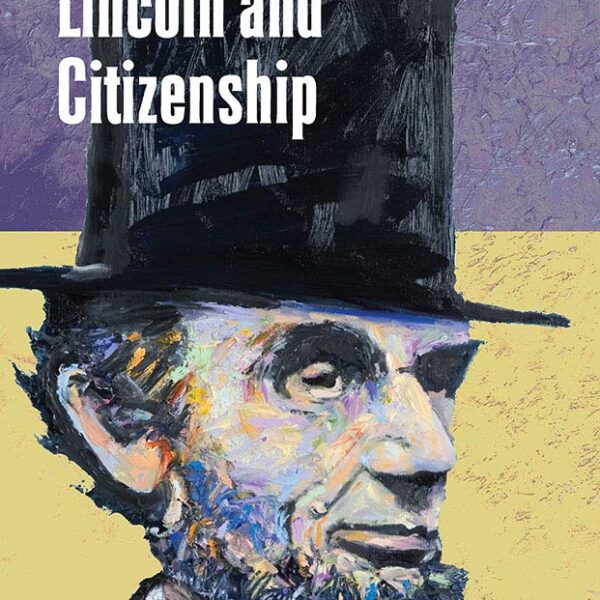The Rivers Ran Backward: The Civil War and the Remaking of the American Middle Border by Christopher Phillips. Oxford University Press, 2016. Cloth, ISBN: 978-0195187236. $34.95.
 In The Rivers Ran Backward, Christopher Phillips explores the political legacy of the American Civil War in the Middle Border. Defined by Phillips as a region bound by waterways and stretching from Ohio to Kansas, the Middle Border served as a permeable yet symbolic boundary between slavery and freedom. In the antebellum period, the Middle Border was marked by a moderate, western political culture that foregrounded accommodation over slavery. However, after the attack on Fort Sumter, the western political consensus irrevocably fractured, metastasizing the sectional binary between North and South.
In The Rivers Ran Backward, Christopher Phillips explores the political legacy of the American Civil War in the Middle Border. Defined by Phillips as a region bound by waterways and stretching from Ohio to Kansas, the Middle Border served as a permeable yet symbolic boundary between slavery and freedom. In the antebellum period, the Middle Border was marked by a moderate, western political culture that foregrounded accommodation over slavery. However, after the attack on Fort Sumter, the western political consensus irrevocably fractured, metastasizing the sectional binary between North and South.
Phillips suggests that unfree labor was a fluid category in the Middle Border. With African Americans forced to labor in Northern mines, indentured on lifelong contracts, and legally defined as second-class citizens through Black Codes, the antebellum North failed to adhere to the principle of “freedom national.” Conversely, below the Ohio River, the steady march of plantation slavery from the Deep South into Kentucky caused a well-spring of anti-slavery activism. By 1860, the Middle Border was home to a diversity of political ideologies, ranging from the ardent abolitionism of Owen Lovejoy to the white supremacy of David Rice Atchison. These political divisions became visible when westerners split into pro- and anti-Republican factions following the election of 1860. While the western political consensus began to fray in 1860, Phillips submits that a majority of westerners denounced secession, called for sectional harmony, and espoused moderate proslavery positions.
During the secession crisis, the Middle Border embraced a western “regionalism,” which was exemplified by Kentucky’s decision to declare neutrality in 1861. In the aftermath of Fort Sumter, the Middle Border quickly became a battleground between conditional and unconditional Unionists as well as slave-owners and yeoman. As these groups jockeyed for power, Phillips claims that the West experienced “an inner war front” that was marked by guerilla warfare, vigilante justice, and the imposition of martial law by Union officials (163). Similar to Kentucky’s short-lived neutrality, individuals in the Middle Border were compelled—often by force—to choose sides in the sectional conflict.
As James A. Garfield noted, “we have long enough heard the story of the North and South…God be praised, there is a West” (4). Phillips takes Garfield’s advice and envisions an expansive American West. Rather than assigning the West to a particular geographic region, he details westward movement as a long-term and historically contingent process. His emphasis on political culture underscores the Middle Border as a distinctly western region that coalesced around proslavery ideology and Whig economic policy. The West offered antebellum Americans with a political alternative between North and South but, ultimately, was polarized by widespread violence.
In fact, Phillips claims that the partisan nature of war in the West taught Union and Confederate officials that the Civil War would not be won quickly nor easily. With wholesale depopulation of counties in Missouri, confiscation of private property, and internecine warfare, Phillips suggests that the West forged the hard war that became prevalent in 1864. Importantly, he also notes that the West was crucial in pushing Union officials toward emancipation. For instance, he claims that Jayhawkers confiscated slaves from Missouri and enlisted them in Kansas militias before Benjamin Butler’s contraband policy was formally approved. Of course, many western politicians, especially Clement Vallandigham, were perturbed by such actions and spearheaded a vigorous dissent movement. Dissenters advocated an alternative western ideology which asserted that Lincoln’s dictatorial abuse of power was as illegal as secession. By the end of the war, Phillips notes that the Middle Border was no longer viewed as the West and, instead, the frontier was pushed toward the Rockies. This new West became synonymous with Indian wars and was understood as “a place of multiplicities imagined as individual and national possibilities” which were “pushed on rather than being won or lost” (324).
While there is much to appreciate about Phillips’ nuanced assessment of western politics, his terminology is, at times, unclear. In an effort to unravel support for the secession in the Middle Border, Phillips categorizes southern sympathizers as “political” and “cultural” southerners. Despite ostensibly supporting the South for socio-economic reasons, Phillips never fully fleshes out who comprised these groups or whether we can truly separate southern culture from southern politics. After working on The Rivers Ran Backwards for nearly twenty years, Phillips understandably highlights his copious primary research, but his insistence on minutia dilutes his analysis. In particular, his over-reliance on quotes and his unusual use of introductions before each chapter disrupts the flow of his narrative.
Admittedly, these are minor flaws in an otherwise excellent work of scholarship. By focusing on the Middle Border, Phillips expands our understandings of the West and forces historians to reconsider the North-South sectional binary. As a result, The Rivers Ran Backwards significantly adds to understandings of the border region as well as the American West, and should be read by specialists in nineteenth century United States history.
James G. Kopaczewski earned an M.A. in History at Villanova University. He is a doctoral student in History at Temple University.




